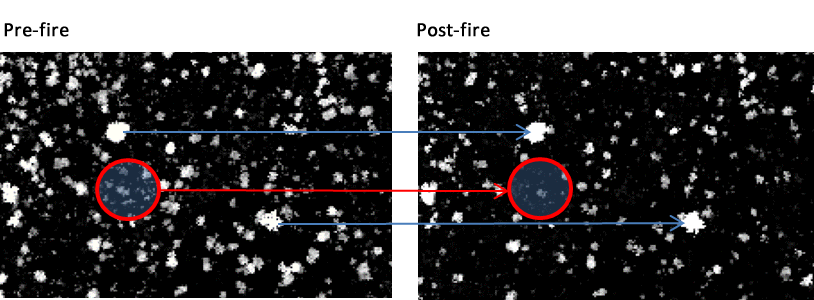1 August 2016 | By Brian van Wilgen
Repeated high-intensity fires can reduce bush encroachment, but they also speed up the loss of tall trees. These findings came from a recent study by a team of researchers including C·I·B Core Team Member, Brian van Wilgen, and were published in the Journal of Applied Ecology.
Grasslands and open savannas are continuously being invaded by woody plants (a phenomenon commonly called bush encroachment) and scientists predict that the extent of this phenomenon will grow as the levels of CO2 in the atmosphere increase. Herbicides or mechanical clearing can be used to reverse bush encroachment, but are expensive and impractical over large areas. One suggested method to reverse bush encroachment is the use of high intensity fires that would reduce woody shrub cover, while leaving tall trees unaffected.

To test this idea, South African National Parks, with logistical support from Working on Fire conducted a fire experiment to see whether high intensity fires could be used to reverse bush encroachment in the Kruger National Park. Using LiDAR remote sensing technology, the team of authors from South African National Parks, Carnegie Institution of Science and C·I·B compared the vegetation cover and height in areas exposed to repeated high intensity and low intensity fires, as well as areas protected from fire, before and after the different fire treatments.
Findings following the fire treatments
The research team found that two successive high intensity fires reduced bush cover. In comparison, the areas burnt by two successive low intensity fires became even denser over the 4 year study period.
“The high intensity fire was successful, at least in the short term, in reducing bush cover, but we were surprised at the number of tall trees, exceeding 10 meters, that collapsed following high intensity fires” says van Wilgen.
Tall trees are normally considered to be unaffected by fires because their canopies are above the “flame zone”, but in this experiment, more than a third of tall trees collapsed after two successive high intensity fires. Trees were apparently vulnerable to high intensity fires because elephants remove bark within the “flame-zone” height which causes the wood to dry and become vulnerable to wood borer infestations. These “weak” points enable high intensity fires to set the stem alight and lead to toppling of the tree.
“We were hoping our results would show that high intensity fires could be used to reduce cover of encroaching shrubs. Although we confirmed this, at least in the short term, the accompanying damage to tall trees creates a management conundrum” explains van Wilgen.
Van Wilgen and co-authors suggest “that one solution may be to repeatedly apply high-intensity treatments to some areas, and not to others, to generate a heterogeneous landscape where grasses become dominant and tall trees scarce in some places, but in others tall trees remain and shorter woody shrubs increase. We predict that in areas without elephants or with lower elephant densities, high intensity fires may have less of an impact on tall trees”.
Read the full paper by Smit et al.
For more information, contact Brian van Wilgen at bvanwilgen@sun.ac.za



